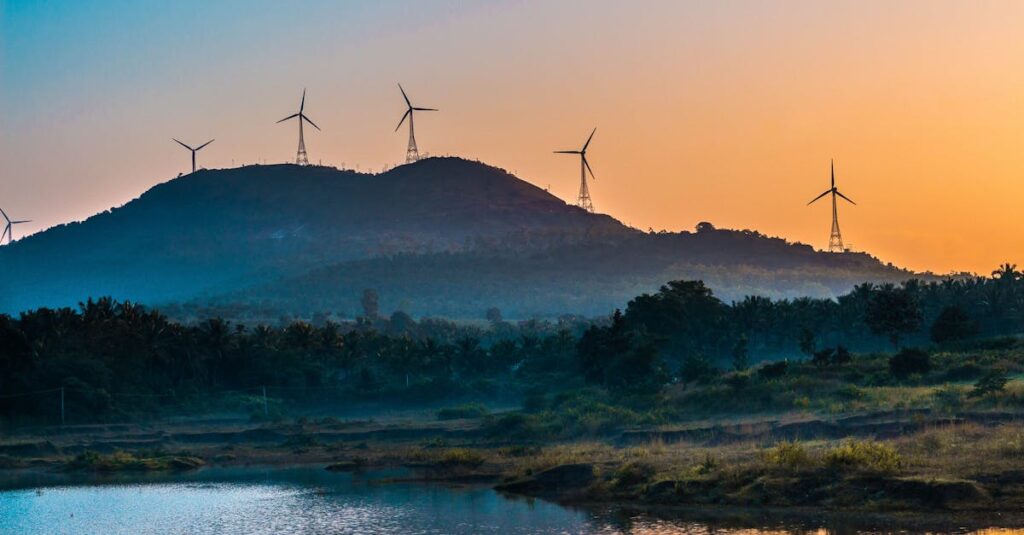One Step Towards Green and Clean Energy: The Path to a Sustainable Future
In an era where climate change and environmental degradation dominate global conversations, one step towards green and clean energy has become more than just a trend—it’s a necessity. Clean energy is no longer a distant dream but a tangible goal that nations, corporations, and individuals are striving to achieve. But what exactly is clean energy, and why is it so crucial for our future? Let’s explore the concept, its significance, and the challenges and opportunities it presents.

What is Clean Energy?
Clean energy refers to energy derived from renewable, zero-emission sources that do not pollute the atmosphere when used. Unlike fossil fuels such as coal, oil, and natural gas, clean energy sources are sustainable and have a minimal environmental footprint. These sources include solar, wind, hydroelectric, geothermal, and biomass energy. Clean energy is often synonymous with “green energy,” though the latter specifically emphasizes the environmental benefits of these energy sources.
The key difference between clean energy and traditional energy lies in its production process. Clean energy systems generate power without releasing harmful greenhouse gases (GHGs) or other pollutants, making them a vital tool in combating climate change.
Why is Clean Energy in Demand?
The demand for clean energy is driven by several factors:
- Climate Change: The burning of fossil fuels is the primary contributor to global warming, releasing carbon dioxide (CO₂) and other greenhouse gases into the atmosphere. Clean energy offers a way to reduce these emissions and mitigate the effects of climate change.
- Energy Security: Many countries rely heavily on imported fossil fuels, which can lead to economic and political instability. Clean energy sources, often locally available, reduce this dependency.
- Public Health: Fossil fuel combustion releases pollutants that cause respiratory diseases and other health issues. Clean energy improves air quality and public health.
- Economic Growth: The clean energy sector is a growing industry, creating jobs and driving innovation in technology and infrastructure.
Why is Clean Energy the Future?
The future of energy lies in sustainability. Fossil fuels are finite resources, and their extraction and use come with significant environmental and social costs. Clean energy, on the other hand, is abundant and inexhaustible. As technology advances, the cost of generating clean energy continues to decline, making it more accessible and affordable.
Moreover, global commitments like the Paris Agreement aim to limit global warming to well below 2°C above pre-industrial levels. Achieving this goal requires a massive shift to clean energy. According to the International Renewable Energy Agency (IRENA), renewable energy could supply 86% of global power demand by 2050 if the right policies and investments are in place.
Which Countries Are Leading in Clean Energy?
Several nations are at the forefront of the clean energy revolution:
- China: The world’s largest producer of solar panels and wind turbines, China is also the biggest investor in renewable energy.
- United States: A leader in wind and solar energy, the U.S. has seen significant growth in renewable energy capacity in recent years.
- Germany: A pioneer in solar energy, Germany has set ambitious targets for transitioning to 100% renewable energy.
- Denmark: A global leader in wind energy, Denmark generates nearly half of its electricity from wind power.
- India: Rapidly expanding its solar and wind energy capacity, India is one of the fastest-growing clean energy markets.
Sources of Clean Energy
Clean energy can be harnessed from various renewable sources:
- Solar Energy: Captured using photovoltaic cells or solar thermal systems.
- Wind Energy: Generated by wind turbines that convert kinetic energy into electricity.
- Hydropower: Produced by harnessing the energy of flowing or falling water.
- Geothermal Energy: Derived from the Earth’s internal heat.
- Biomass Energy: Generated from organic materials like wood, agricultural residues, and waste.
Challenges in Generating Clean Energy
Despite its potential, clean energy faces several challenges:
- Intermittency: Solar and wind energy are dependent on weather conditions, making them less reliable than fossil fuels.
- Storage: Efficient energy storage solutions are needed to store excess energy for use during periods of low generation.
- Infrastructure: Transitioning to clean energy requires significant investment in new infrastructure, such as grids and transmission lines.
- Cost: While costs are decreasing, the initial investment in clean energy technologies can be high.
- Policy and Regulation: Inconsistent policies and lack of government support can hinder the growth of clean energy.
Clean Energy and the Environment
Clean energy has a profound positive impact on the environment. By reducing greenhouse gas emissions, it helps combat global warming. According to the Intergovernmental Panel on Climate Change (IPCC), CO₂ emissions must be reduced by 45% by 2030 and reach net-zero by 2050 to avoid catastrophic climate change.
Statistics highlight the urgency:
- Global CO₂ emissions reached 36.8 billion metric tons in 2022.
- Renewable energy accounted for 29% of global electricity generation in 2022, up from 27% in 2021.
- The Earth’s average temperature has already risen by 1.1°C since the pre-industrial era, primarily due to human activities.
The Future of Clean Energy
The future of clean energy is bright but requires collective effort. Advances in technology, such as improved battery storage and smart grids, will address current limitations. Governments, businesses, and individuals must collaborate to accelerate the transition.
Will Humanity Succeed in Clean Energy?
The answer lies in our willingness to act. While the challenges are significant, the progress made so far is encouraging. With continued innovation, investment, and political will, humanity can achieve a sustainable energy future. Clean energy is not just an option—it’s the only way forward if we want to preserve our planet for future generations.
Conclusion
One step towards green and clean energy is a step towards a healthier, more sustainable world. By embracing renewable energy sources, we can reduce our carbon footprint, protect the environment, and ensure a brighter future for all. The journey is challenging, but the rewards are immeasurable. Together, we can make clean energy the cornerstone of global progress.